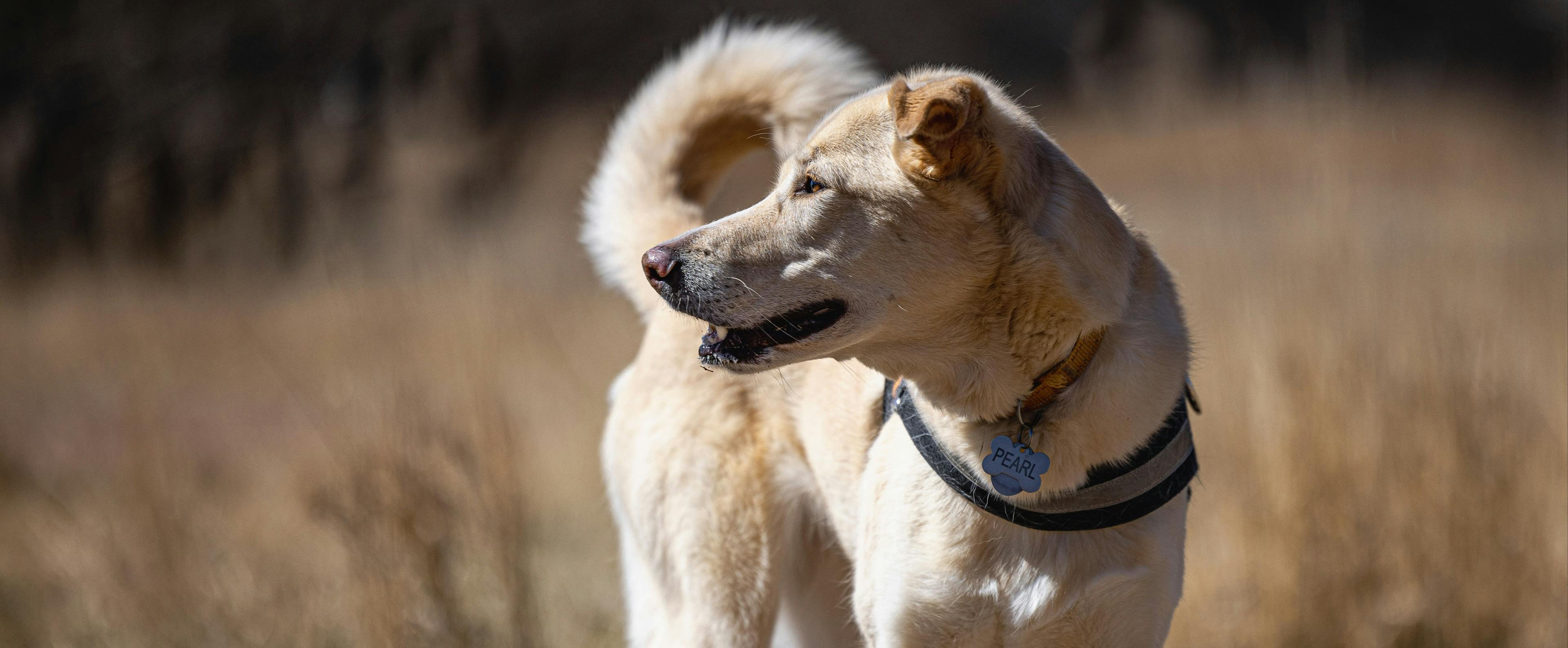
Warmer weather is great, but spring and summer also come with an increased risk of your dog getting bitten by insects. From identifying different types of insect bites to how to treat insect bites on pets, PETstock is here to give you the details – bugs and all.
Identifying Insect Bites On Dogs
It can be hard to know for sure if your dog has been bitten by an insect if you don’t witness it – but there are some signs to look out for. While reactions can vary from mild to severe, you might notice these common bite symptoms after spending time outdoors with your pooch.
- Red marks and/or swelling.
- Raised bumps.
- Hives.
- Compulsive itching, chewing or licking.
While not pleasant, insect bites are an unfortunate reality of the warmer months and, in most cases, they’re not cause for alarm. Here’s a rundown of what to expect from different types of insect bites.
Mosquito Bites on Dogs
If your dog has been bitten by a mosquito, they’ll start itching compulsively and you’ll find irritated bumps around the itch site.
In most instances, mosquito bites are a mere annoyance – but they’re a cause for concern if your dog has an allergic reaction (more on this below) or, more alarmingly, if they develop heartworm. Administering your dog with a regular heartworm preventative is strongly recommended to protect your pooch from this potentially deadly parasite.
Bee and Wasp Stings on Dogs
If your dog is stung by a bee or a wasp, they’ll likely let you know about it! They may act agitated, cry or whine and will tend to try and bite or paw at the sting site. Wasps are unlikely to leave a stinger behind, but bees often do – so check your dog thoroughly. If there’s still a stringer embedded in your dog, you need to remove it as it can continue to pump venom into your dog even after the bee has died.
How to Remove Bee Stinger from a Dog
DO: Use something thin and flat (like a credit card or even your fingernail) to scrape the sting away from your dog’s skin.
DO NOT: Use your fingers or tweezers to pinch the sting to remove it – this will release more venom into your dog, causing more pain and increasing the chance of an allergic reaction.
Once the stinger is removed, gently wash the area using a dog-friendly shampoo and cool water. If your dog was stung by a wasp, you can neutralise the sting by dabbing the bite with a vinegar-soaked cotton bud. Use an ice pack to reduce the swelling and monitor them for an allergic reaction. If they have severe swelling, if they’ve been stung multiple times or if they’ve been stung the mouth, take them to the vet.
Fly Bites on Dogs
Fly bites cause small, swollen red bumps – and if your dog has prolonged exposure to flies these sores can develop into dark, crusty wounds which bleed. This is more commonly seen in working dogs, or dogs that live and sleep outside.
Flies are parasitic creatures that are attracted to dogs for a food source. Flies may also lay their eggs in an open wound, causing further infestation and requiring a costly vet visit where your dog will need to be put under anesthetic to have the wound properly cleaned and treated.
When it comes to flies, a prevention method is best. Flies are attracted to faecal matter – so be extra vigilant to ensure your yard is clean in the warmer months. This is also a good time to groom your dog and keep their coat neat and short to ensure it’s clean and there’s no mess mattered in their fur. If your dog sleeps outdoors, make sure their kennel area is clean – or if you have a larger yard and maintaining it represents a challenge consider bringing them inside to sleep during the warmer months.

Ants Bites on Dogs
Ant bites can be very difficult to spot – particularly if your dog is on the shaggy side. The bites themselves look like fly and mosquito bites but they’re smaller and therefore trickier to see – there will usually be a small bump coupled with mild swelling and redness. Ant bites commonly occur on your pet’s paws – if your dog suddenly holds up their paw or begins flicking and shaking their leg, check the area for tell-tale bite signs of an ant bite.
If you find they’ve been bitten, wash the area with mild dog-friendly shampoo and apply a cold compress. If they continue to chew or lick the bite site, you may need to apply a recovery cone (not the ‘cone of shame’!) or similar deterrent to avoid irritating the area further.
Spider Bites on Dogs
In most instances, spider bites represent an irritation rather than a serious affliction. Spider bites cause swollen bumps and redness at the bite site, which should heal on their own without intervention.
Venomous spider bites, however, represent more of a threat. In Australia, species of concern include Redback Spiders, Funnel-Web Spiders, White-tail Spiders and Australian Tarantula species. Venomous spider bites look like blisters surrounded by red circles. If left untreated, they can develop into unhealing sores and become infected or necrotic. In serious cases, toxins from the spider bite can also cause weakness, muscle tremors, paralysis, vomiting, diarrhoea and breathing difficulties. If you suspect your dog has a venomous spider bite, call your vet.
Flea Bites on Dogs
Flea bites are tiny and tend to appear in clusters. Look for patches of raised red dots near the neck, ears, lower back, stomach, and tail base. These bites are intensely itchy and irritating to the dog, and their presence will usually encourage frantic and repetitive itching and scratching.
Flea bites represent a greater problem than most other insect bites as they tend to indicate an infestation, rather than a one-off event. A flea infestation will need proper treatment – which involves combing through your dog’s hair to remove any eggs, washing your pet with specially formulated flea shampoo, and applying flea and tick prevention medication to your dog’s fur. Washing all your pet’s bedding is crucial, as is a follow-up visit with your vet. Read more about treating and preventing fleas here.
Tick Bites on Dogs
Ticks can be found in all seasons but are a particular nuisance in spring and summer. They embed themselves into your dog’s skin and are hard to spot at first but become engorged as they feed. It’s a good idea to check your dog over after walks or outdoor playtime in the warmer months – if ticks have latched onto your dog they can usually be found between the toes, around the legs and armpits or around the face and neck areas. They will look like small brown specks or swollen black dots.
If you find a tick, remove it immediately using tweezers or a tick remover.
Ticks can transmit dangerous and even deadly diseases to your pet – so vigilance is important, and a parasite preventative should be taken throughout the year.
Can Dogs Have An Allergic Reaction To Insect Bites?
Yes! Just like us, dogs can have allergic reactions to insect bites. Reactions vary from mild to severe. A mild reaction will produce symptoms like lethargy, fever and a loss of appetite. Dogs experiencing mild allergic reactions require monitoring but, provided they don’t worsen, don’t require immediate vet care. If you suspect your dog is having a mild allergic reaction, keep them close and monitor their symptoms. If they worsen or if they don’t improve after 8 hours, take them to the vet.
However, if your dog is having a moderate or severe allergic reaction contact your vet immediately.
Concerning symptoms to watch out for include:
- Difficultly breathing.
- Swollen/puffy lips, eyes, and/or neck.
- Vomiting.
- Diarrhea.
- Staggering or trembling.

Places You May Find Insect Bites On A Dog
Insect bites can be tricky to spot – they’re usually small and can be well hidden behind shaggy fur. If your dog is showing signs of irritation in a certain area, look it over to see if you can find pesky bites. You can also run your hands over your dog’s fur to check for bumps.
Insect Bites on Dog’s Face
- The face is one of the more common places for dogs to get bitten.
- Ticks typically bite dogs on their face – so keep an eye out for dirt-like black or brown specks in the face and neck area after walks.
- The neck is another place where fleas can be found – if your dog is repeatedly itching their neck or rubbing it on the ground, check the area for rash-like marks which are a tell-tale sign of fleas.
- If your dog is bitten or stung in their mouth, take them to the vet as swelling in the tongue or throat can restrict your dog’s airways.
- If your dog has an allergic reaction to a bite, it may cause swelling on their face – though the bite itself could be in another area. If your dog’s face becomes puffy or swollen, you should take them to their vet as this could lead to anaphylaxis.
Insect Bites on Dog’s Nose
- Bites on the nose are common! This is from dogs putting their snoot where it’s not wanted.
- Likely culprits for bites on and around the nose include bees, wasps, flies, ants and spiders.
- If your dog has bites on their nose, monitor them for itching and scratching – you may need to get them to wear a recovery cone to avoid irritating the bite area further.
- If your dog has been stung by a bee, look over their nose area to see if a stinger has been left behind. Follow the instructions (listed above) to correctly remove the stinger.
Insect Bites on Dog’s Back
- The lower back is a choice spot for fleas – a dog with fleas on their back will typically have raised dots on their skin as well as patches of hair loss and scabs.
- Insect Bites on Dog’s Leg
- The leg is a choice spot for ticks. Check both their legs and the armpit area – it’s advisable to keep your dog’s coat neat and short in the warmer months. This keeps them cool and makes it easier to spot ticks and other pests.
- If your dog has a bite on their leg, monitor them for itching and scratching – you may need to get them to wear a recovery cone.
Insect Bites on Dog’s Paw
- Common culprits for insect bites on your dog’s paw are bees, wasps and ants.
- If your dog has been stung by a bee, the bee has likely left their stinger behind. Follow the instructions (listed above) to correctly remove the stinger from your dog’s paw.
- When checking over your dog’s paw for bites, be sure to check between their toes – this is a common area for ant bites.
- Dogs are likely to incessantly lick their paws if they are injured. Monitor your dog’s behaviour – it may be necessary for them to wear a recovery cone.
Insect Bites on Dog’s Belly
- The stomach is an area prone to flea infestations. If you noticed your dog trying to nip or bite at their stomach or trying to drag their underbelly on the ground, check the area for raised bumps or a rash-like irritation (tell-tale signs of fleas).
Insect Bites on Dog’s Ears
- Common culprits for insect bites on your dog’s ears include flies, fleas, ticks and mosquitoes.
- If your dog’s ears are crusty and sore, this could be caused by a fly infestation – a vet visit is recommended to ensure the wound is properly cleaned and treated.

FAQS For Insect Bites On Dogs
What to do when it’s an infected insect bite on a dog?
If your dog has an infected wound, take them to the vet immediately. Severe infections may require surgical attention, whereas milder cases will likely be prescribed antibiotics.
How do you know if a wound is infected on a dog?
An infected wound will have increased redness around the sore, it will usually leak puss or fluid and the dog will lose hair around the wound. They may also develop an abscess – a fluid and puss filled lump which forms on the skin. Other signs to watch out for include lethargy and loss of appetite.
My dog hates wearing recovery cones. What else can I use?
If your dog is uncomfortable in a cone, you can also use bandages, a sock (if the bite is on their paw) or put them in doggy pyjamas which cover the wound so they can’t lick, chew or scratch the bite.
If your dog is bitten by an insect, follow our step-by-step instructions.
-
Try to identify the type of bug bite – as treatment may be different depending on what insect has bitten your dog.
-
If your dog has been bitten many times or if they’ve been bitten in the mouth, take them to the vet. If they’ve only been bitten once, use an ice pack to reduce the swelling and cool the skin. Try to do this for 15 minutes.
-
Make a baking powder mix to reduce inflammation. Mix 3 parts baking soda with 1 part water to make a paste. Then, apply it to the sting/bite area. If your dog has been stung by a wasp, skip the baking soda mix and instead apply vinegar to a cotton pad and dab the wound with it – this will neutralise the sting.
-
Give your dog a bath using an oatmeal shampoo. This will soothe their skin and ensure it’s clean to reduce the risk of infection.
-
Ensure your dog isn’t irritating the wound by excessively licking, chewing or scratching. If they’re interfering with the bite, get them to wear a cone to protect the wound.
-
Keep your dog close and monitor them for signs of an allergic reaction over the next eight hours. If they present moderate or severe symptoms (listed above) take them to the vet.
-
Monitor the wound for signs of infection. Provided the wound doesn’t become infected and your dog doesn’t have a serious allergic reaction, your dog should heal comfortably in time.